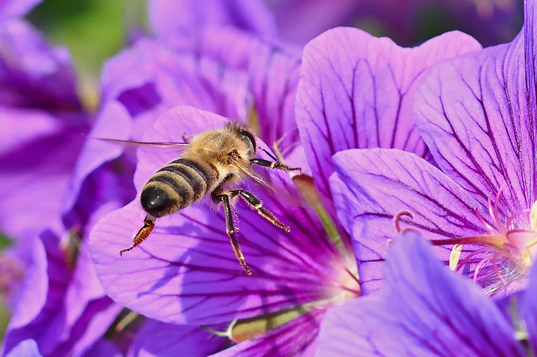High density of honeybee hives: more risk than benefit?

A new study led by the Basque Centre for Climate Change (BC3) research centre warns of the need to establish thresholds for the number of beehives based on scientific evidence.
The study shows that as the density of domestic bee hives increases, the benefits appear to be minimal compared to the damage they can potentially cause to ecosystems.
The demand for pollination services in crops and honey production has led to a global increase in the number of honeybee hives (Apis mellifera L.) in recent decades. However, as agricultural practices become increasingly dependent on this single species, concerns have arisen about the possible ecological consequences of its widespread use.
High densities of honeybee hives, often located near agricultural areas, can influence local biodiversity by altering the dynamics of competition between pollinators, modifying the relationships between plants and pollinators, and affecting the availability of floral resources.
In this context, the Basque Centre for Climate Change (BC3) has led a new study, published in the Journal of Applied Ecology, which provides new scientific evidence on the potential ecological risk of high bee hive density.
‘While the ecological impacts of managed honey bees have been widely studied, most research has focused on their presence or absence, ignoring how variation in hive density could influence ecosystem dynamics,’ explains Ainhoa Magrach, a BC3 researcher and author of the study.
To shed some light on this issue, the research team conducted a comprehensive review of studies, mostly from North America and Western Europe, that examine the ecological impacts of honeybee hives, emphasising variations in hive density and their consequences for wild pollinator communities, plant-pollinator interactions and crop yields.
The work shows that increased hive density has effects on wild pollinator visitation rates, species richness, and plant reproductive success, while the benefits to the production of different crops appear to be minimal compared to the damage they can potentially cause.
‘The ecological consequences of high-density bee management are significant, requiring a reassessment of pollination strategies in agricultural landscapes,’ Magrach points out.
Hives per hectare
Experts have observed negative effects even at densities as low as 0.25 hives per hectare, well below current management guidelines of 1 to 25 hives per hectare for many crops.
Establishing hive density guidelines based on scientific evidence will be essential to balancing agricultural productivity with the conservation of native pollinator communities and the maintenance of healthy ecosystem dynamics.
‘The discrepancy between current management guidelines and the hive density at which we observe negative impacts for some variables underscores the need to review population recommendations based on ecological data,’ the expert concludes.
The research also offers a series of recommendations to limit negative impacts: mandatory hive registration systems, revising hive density guidelines tailored to specific crop needs and ecological conditions, and greater investment in mechanisms by which honey bees can affect native ecosystems, the contribution of wild pollinators, and alternative pollination strategies.
In addition, agricultural and environmental policies, such as the European Union’s Common Agricultural Policy, should incorporate science-based limits for hive densities.




